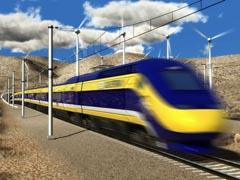
USA: The planned initial segment of California’s proposed high-speed rail network was almost doubled in length on December 20, thanks to the reallocation of federal funding promised for right-of-way upgrading schemes in Wisconsin and Ohio.
Following the rejection of those projects by the two states’ newly-elected governors, the Department of Transportation withdrew the promised federal grants totalling $1·2bn and re-distributed the money, providing an additional $616m for California. Together with a matching sum from a state bond issue, this will allow the proposed pilot segment to be extended further south to the outskirts of Bakersfield. The total financing available to begin construction is now $5·5bn.
In November the California High Speed Rail Authority’s board announced its preferred option for the pilot section, starting with 105 km of route in the San Joaquin Valley between the towns of Madera and Corcoran with a stop in Fresno. The extension to Bakersfield will add a further 88 km, connecting the two largest cities in the valley and countering criticism that the initial section would be a railway to nowhere.
However, CHSRA Executive Director Roelof van Ark warned that the exact length depends on the alignment, which cannot be selected until environmental studies have been completed. He suggested that financial constraints would see the line ending in the northern part of Bakersfield, and it is not clear whether the line could open for revenue service until further expansion projects had been completed.
‘This is the right place to start and the right way to start’, said Vice Chairman Tom Umberg. ‘Working from the midpoint of the system gives us flexibility to keep building north and south — and builds the backbone fundamental to a true high speed rail system.’ The pilot segment would form part of a route between San Francisco and Los Angeles, to be completed by 2020 as the first phase of a planned 1 300 km, state-wide network costed at $43bn.





































